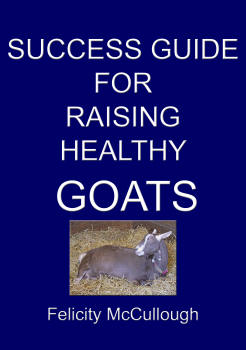Keeping Goats For Their Hair
Goat's Hair
One of the reasons why goats are kept is to sell their hair, which is also called fibre.
There are two types of goat fibres produced, Mohair and Cashmere. This Cashmere is not the one that comes from rabbits; however it is still a highly valued material to make clothes.
The quality of the coat will change as the goat ages. A young goat produces a finer fleece, whereas an older goat produces more yield.
Mohair is a type of hair, it is not wool, which is produced by Angora goats. Angora is a type of goat breed specifically bred for their hair. It is said that Angora fleeces can shimmer in the sunlight and that mohair is the hardest wearing of all natural fibres. It is often combined with lamb's wool, to produce hard-wearing woollen garments.
Mohair is collected by shearing the goat with clippers twice a year. You can get 7 - 7.5 kilos of hair, per clipping. One goat can therefore give you an approximate annual yield of 14 kilos. Goats have quite a thin skin and very little fatty insulation, therefore sheared goats should be provided with goat coats, especially in the winter.
Another time when goats are normally clipped, is right before kidding. This is especially true for all goats with long hair, not only Angoras. It is done in order to make clean up after kidding easier, and also so that the kids can find the teats easily.
Cashmere originates from the goat's undercoat. It is highly valued, because so little is produced and also because the work involved to obtain the end product, is much more labour intensive. It is combed out of the coat, rather than being sheared off. There can be no outer coarse hairs mixed in with the finer cashmere hairs, or it will produce an inferior product.
It takes approximately 3 to 4 goats per annum, to create enough cashmere for one sweater!
There is no specific breed that produces Cashmere.
Felicity McCullough
11th August 2016
 |
 |
 |
|
 |
 |
 |
|
 |
 |
 |
|
 |
 |
 |
|
 |
Goat Lap Shop Home
about goat, about goat farming, angora goat hair, backyard goats, goats best for hair, care about goats hair, care for pets, goats care hair, care of goat’s hair, care of the Goat’s hair, caring for goats, farm goat, goat breeds, goat by products, goat care, goat health, goat husbandry, goat keeping for beginners, goat pet, goat wool, goat farming, goats 101, good goat’s hair, goats health hair, health of goat’s hair, how to care for goats, how to care for Goat’s hair, how to keep goats, how to take care of goats as pets, information about goat, information about pets, keeping goats, mohair goats, owning a goat, raising angora goats, the backyard goat, what is goat farming, why raise goats, cashmere goat’s hair, cashmere, mohair,

American Dairy Goat Association
American Goat Society
Dairy Goat Society of Australia
DEFRA UK
National Pygmy Goat Association
Pygmy Goat Club
Welfare of Goats During Transport
